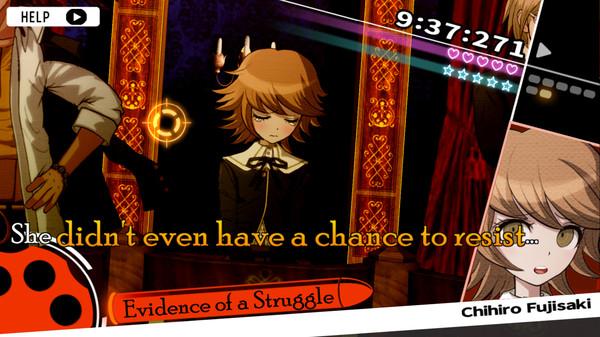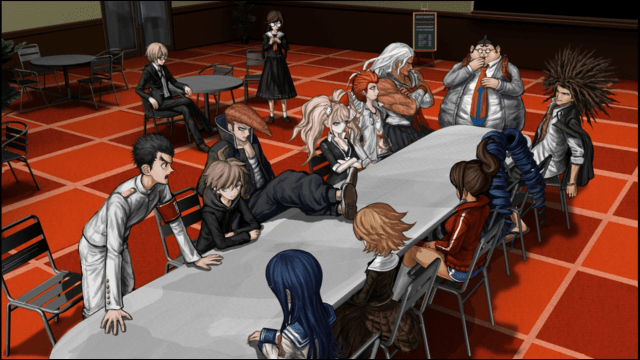Danganronpa: Trigger Happy Havoc (part of the Danganronpa 1.2 Reload collection of games) is a game that has been in my backlog for quite some time, and I am very happy I played it. In the game, you play as a student who has been trapped inside of a school with 14 other students, and all of you are highly incentivized to murder another student. This confined space limits the number of options available to the player at any given moment, and it results in each location feeling unique and containing vitally important information (which I will discuss more of later). As for the 14 other students, each one embodies some hyper-specific personality/talent stereotype. While this makes the characters feel a bit flat at times, it is of tremendous benefit to the overall narrative, mystery, and mechanics of the game. Everyone has their niche, and it allows the player to know enough about each character to make appropriate logical jumps (i.e. Who has really good projectile accuracy? The former baseball star, of course!) which help the player solve the mystery. In turn, this also encourages the player to intently engage with the game’s mechanics in order to gain enough information through each arc so that they can successfully solve each mystery that they are presented with. The gameplay itself can be represented as the following looping structure: pre-murder, post-murder investigation, and the trial period.

First, I will talk about the pre-murder mechanics. When there is no murder to be solved, the player is free to explore and learn more about their environment, attempt to figure out why they are trapped in the school, and spend time with the other characters that they are trapped with. This section of the game involves investigating the many different objects that can be found throughout the environment, and these investigations can slowly reveal more information that helps the player piece together the overarching story. The investigatory mechanics make the player feel like they are slowly uncovering the truth, and it serves as a practice round for the post-murder mechanics.
Once a murder has been discovered, the game changes to its post-murder mechanics. In this section, the player is tasked with gathering as much information as possible in order to determine who the killer is. This is done through the same investigatory mechanics of the pre-murder gameplay; however, the player is now investigating a crime scene. Additionally, the player must manually follow-up on the information they uncover and ask specific characters about specific pieces of information and evidence. Since the player is working with the same information as the character they are playing as, they get to slowly uncover the truth through their own intuition, and this makes the player feel rather clever. The follow-up mechanics in particular really reward players who have paid close attention to the information, characteristics, and behaviors of their environment and the other characters around them. This creates a positive feedback loop in which the player is highly encouraged to pay close attention during every interaction for any information that could help them solve the overarching mystery and each individual murder mystery.

When the investigation period ends, the trial period begins. During the trial period, the player must put together all of the evidence they have uncovered, determine who the killer is, and convince all of the other characters. When I initially went into the first trial, I felt that it would be more of a formality since I had figured out who the killer was long before the trial period began. Thankfully, the game does a great job of incorporating the trial mechanics into the narrative and uses both to reveal more of the mystery. The primary way it does this is through hidden information. Although the player uncovers a lot of information during the investigation period, they do not uncover all of the available information and evidence. Instead, each of the characters also has evidence and information to share. This led to a really fun gameplay loop in which I would have to actively solve the mystery and precisely determine the series of events that led up to the murder while playing short-form minigames that rapidly granted me more information. This led to me always being on the edge of my seat as all of the mechanics the game introduced thus far came together and forced me to constantly reconsider the version of events I had in my head all the up until the final moments. Then, when the trial is over, a new arc begins, and the player is looped back to the pre-murder mechanics.



